Blasting the Coronavirus with UVC: Part 2
The coronavirus (SARS-Cov-2) can be killed by a type of light called UVC. As a result, everyone from municipalities to hospitals have lined up to buy big units to blast the virus. Two weeks ago, in part 1 of this series, I showed how our clinic had created two different DIY UVC virus blasters. This part 2 blog details the results of my tests on the units I made called Medusa 1 and 2.
UVC Light
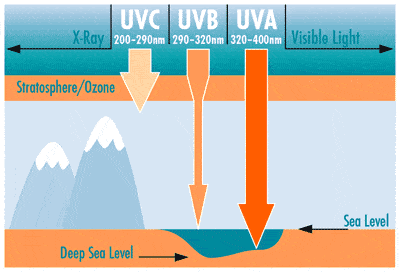
The problem with the commercial units meant for hospitals is that they’re not only crazy expensive, but also hard to find these days. Given that they’re nothing more than UV bulbs and a stand with a remote start and stop, making a DIY room sterilizer isn’t rocket science. Hence, I decided to McGyver two different models to test. If they measured up, then we would use one or both to add an extra protection and sterilization step to our exam and procedure rooms.
I gave our UVC virus killers names. Since the greek god Medusa has snakes for hair and would turn anyone looking her way to stone if they looked directly at her, that seemed the right handle. This blog follows up on my rigorous testing of Medusa 1 and 2.
Testing
How Do Hospitals Validate UVC Sterilzers?
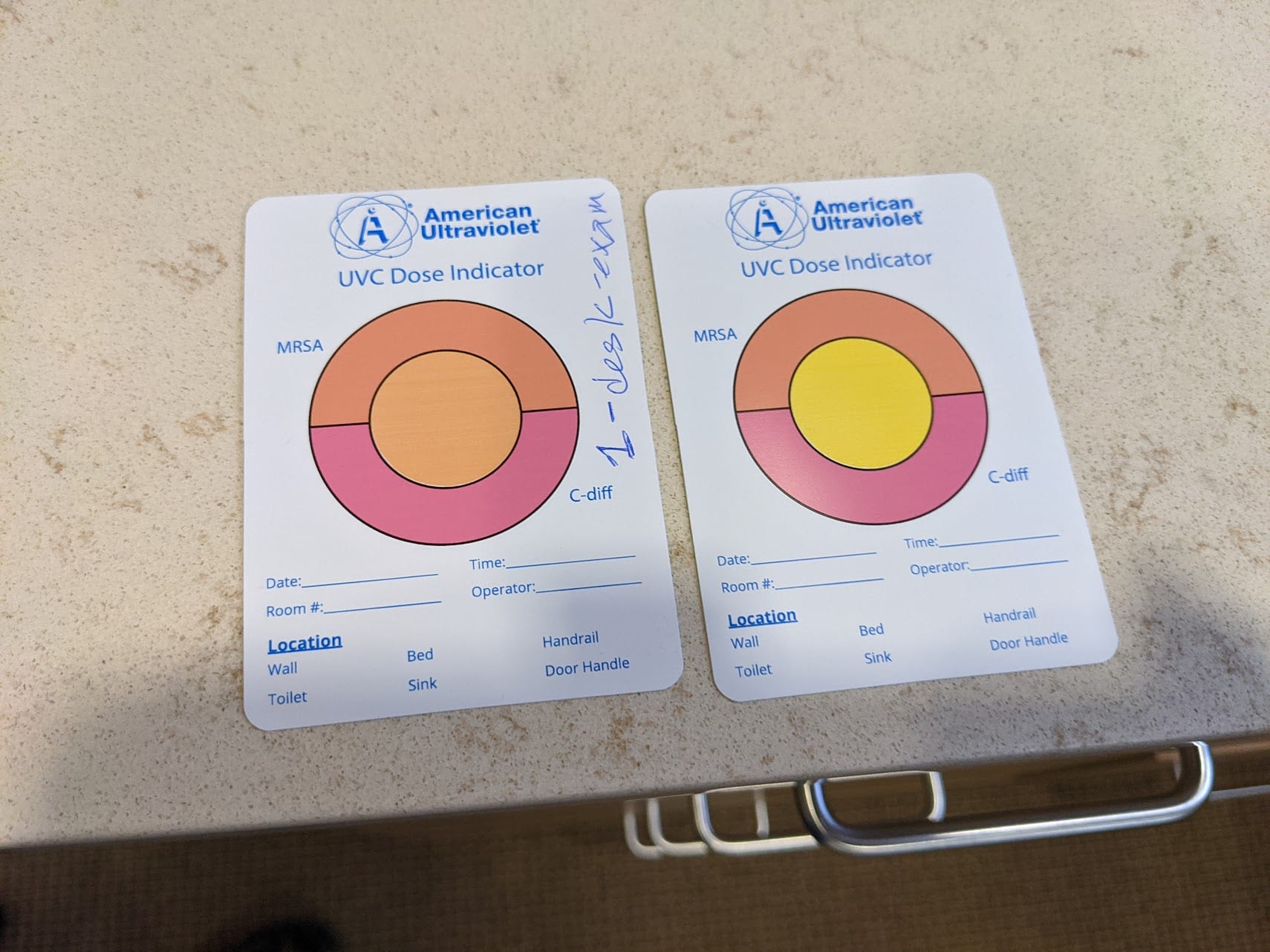
A Second Practical Check
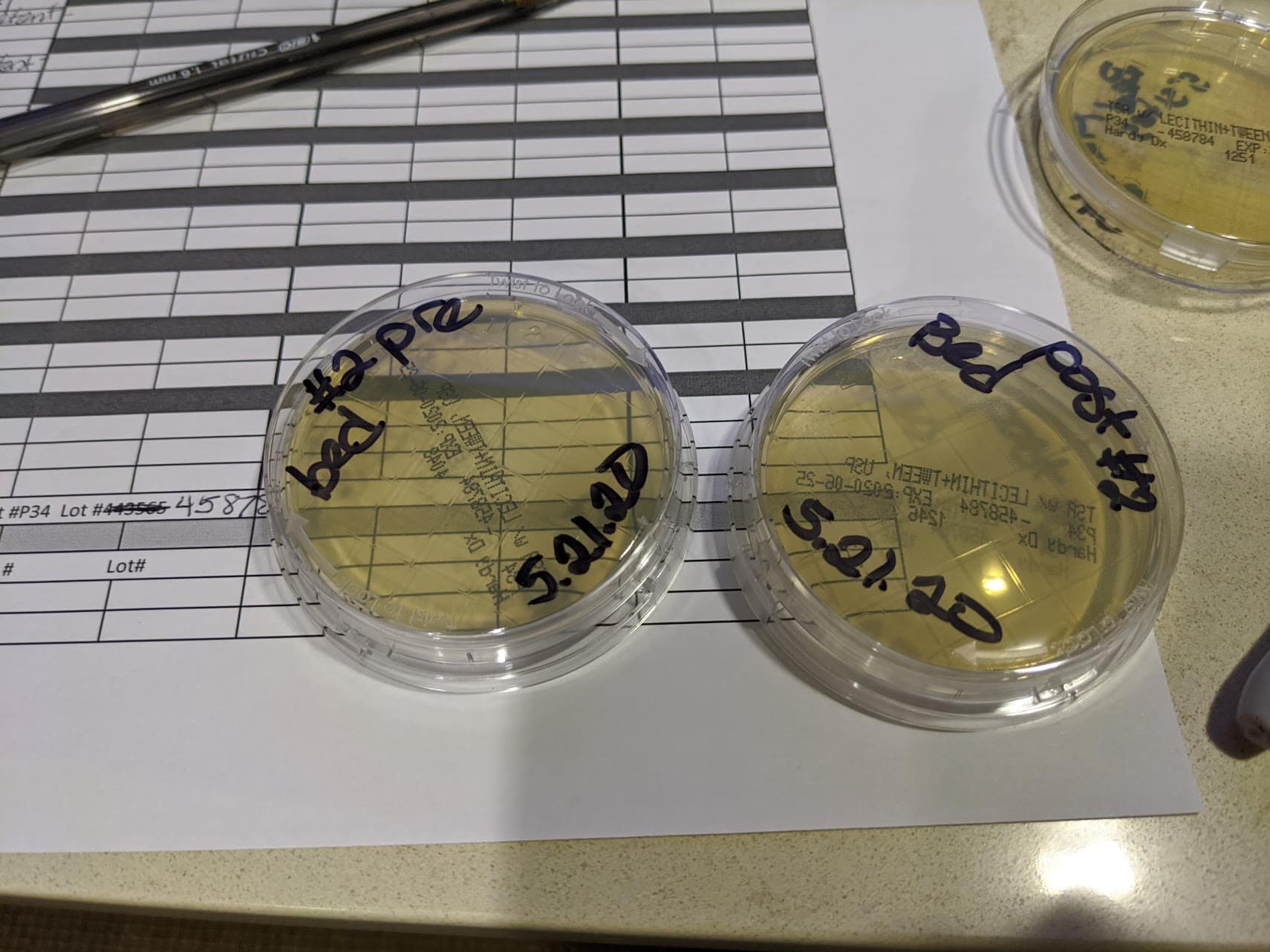
Medusa 1
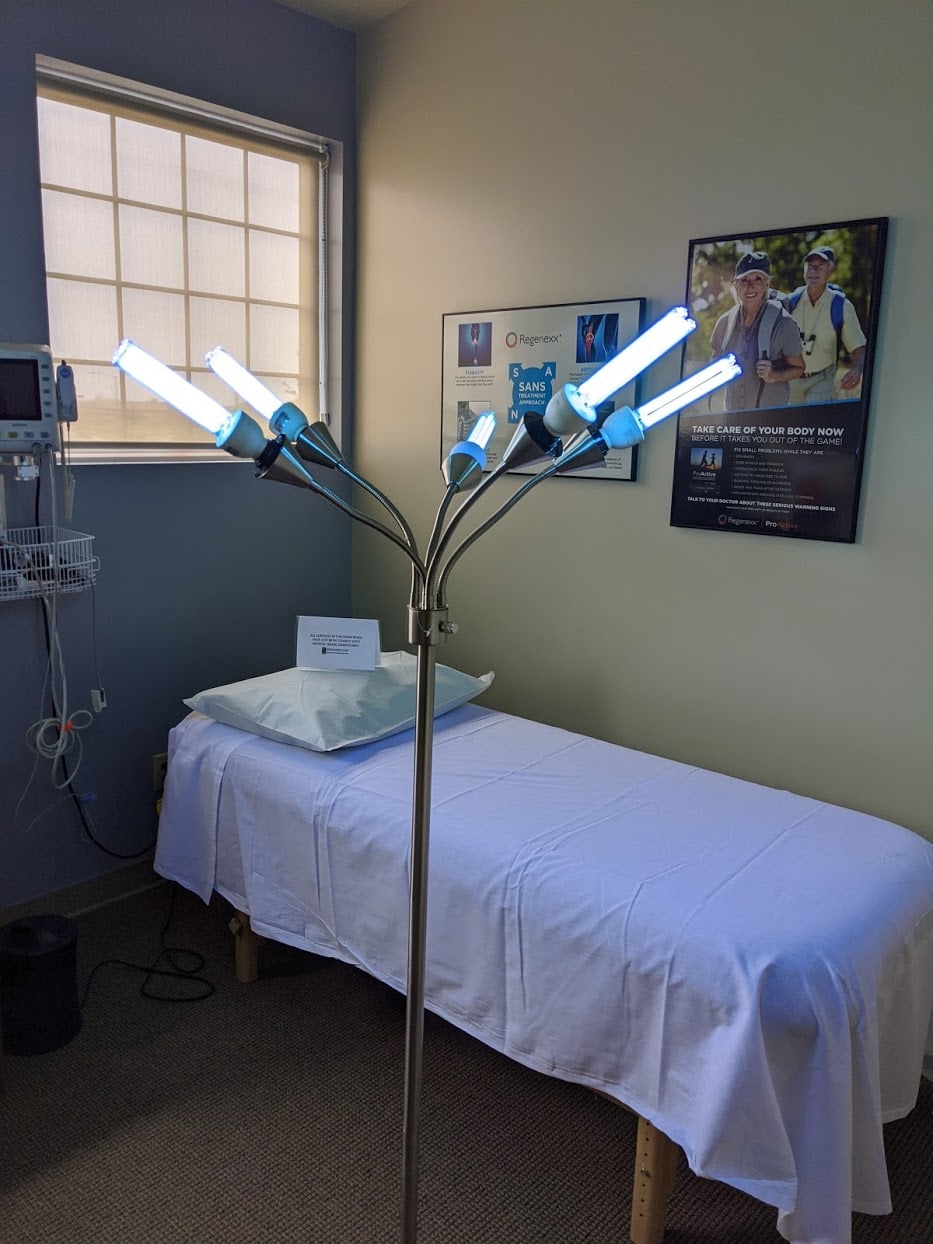
Medusa 1, based on my tests, is a stone-cold microorganism killer. She may not be pretty, but what she lacks in looks she makes up for in sheer lethality. Let’s dig into her results.
Medusa 1 is simply a stainless steel commercial lamp with 5 adjustable arms on a roller base. I used five 25 watt UVC Mercury-Quartz lamps off Amazon and a plugin wall remote. Total cost was under $400, or less than 1/10th the current price of the smallest hospital room sterilizer I can find and wouldn’t be able to buy for months.
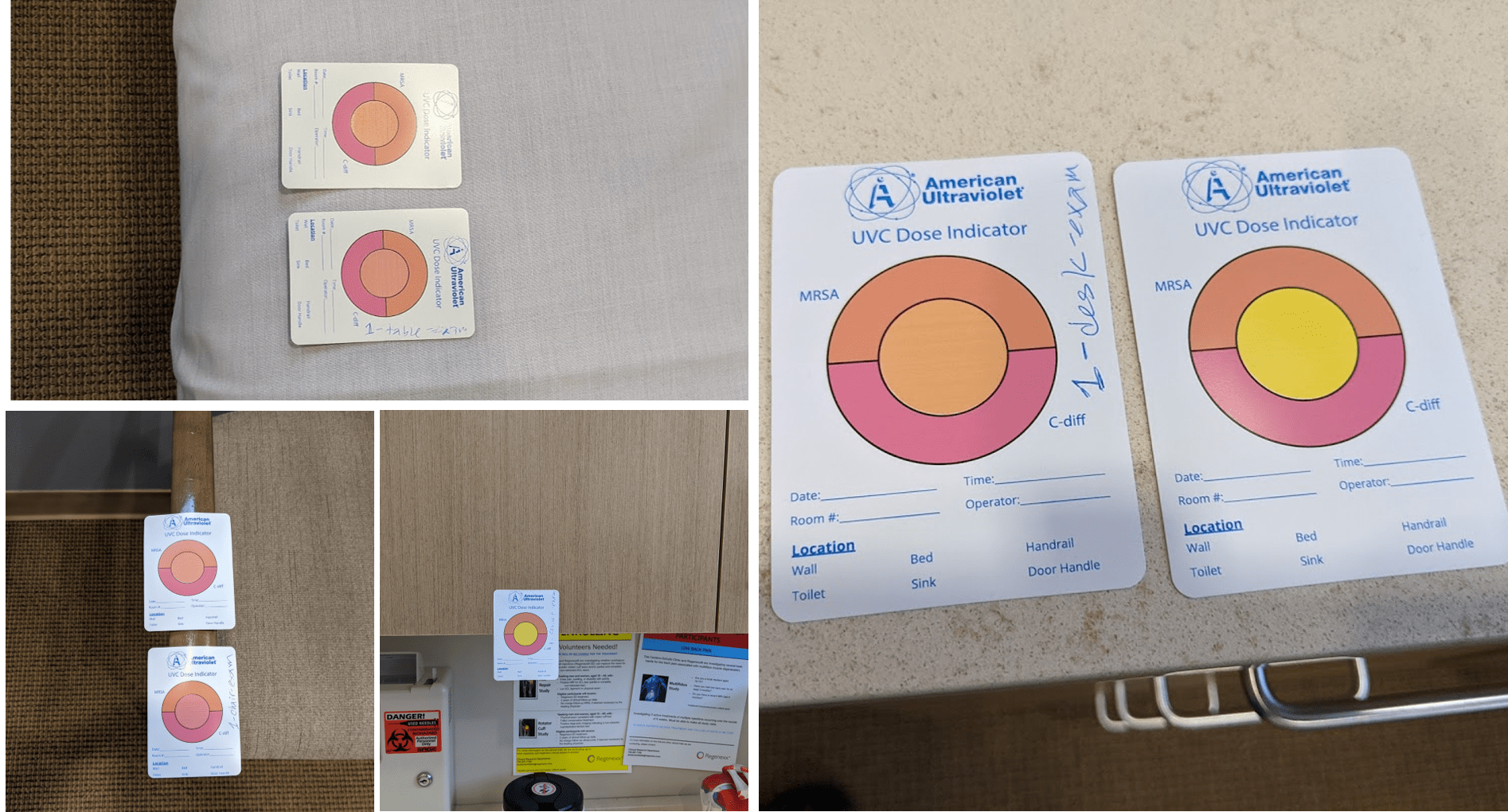
On the bacterial tests, Medusa 1 sterilized the bed and the arms of the chair like a champ. No growth at 48 hours, so she actually did better than USP sterility standards that allow small amounts of growth. Here are all of the data from the various bacterial tests we ran:
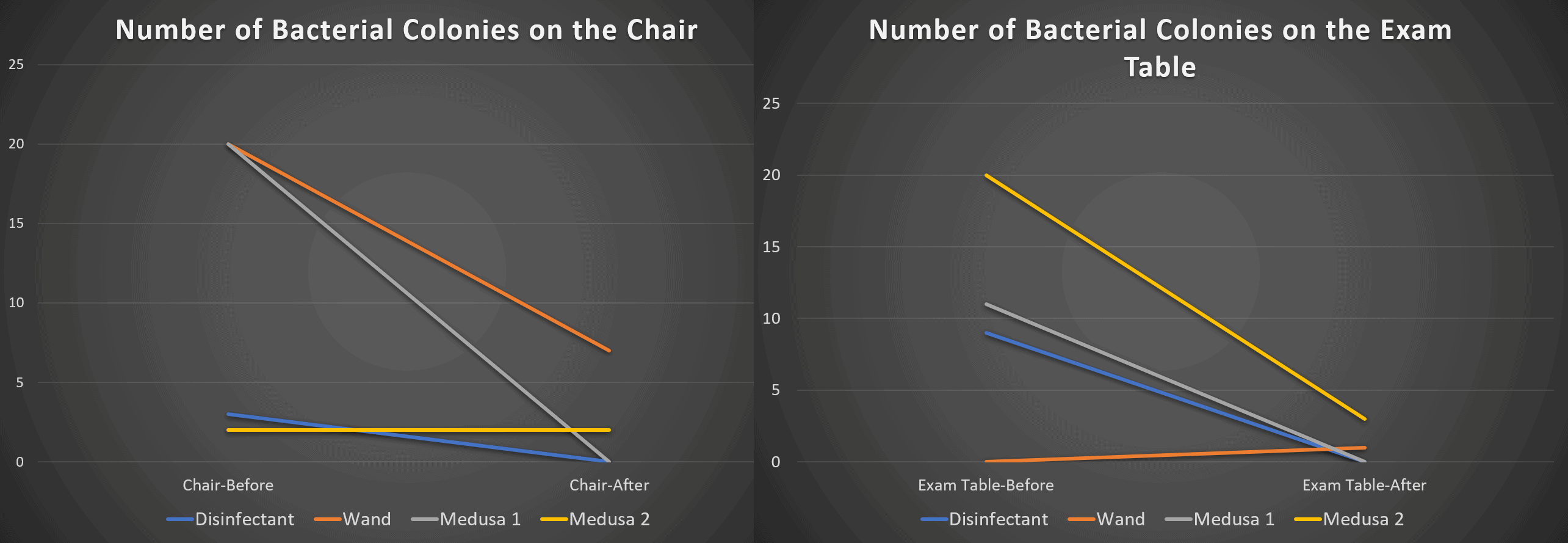
What are you looking at here? When you test for bacteria, you expose a growth medium plate (RODAC) to a surface and let it grow in an incubator for 2 days. In this case, I had people go into the test exam rooms and purposefully sit in the chair or lie on the exam table to make sure they were contaminated. The “before” bacterial colony count on the plates is listed to the left and then the “after” to the right. Hence, ideally, we want these lines to go all the way to zero and head steeply downwards. That’s happened for Medusa 1 and the medical-grade disinfectant.
As I said, she ain’t as pretty as her sister, but she’s a killer
Medusa 2
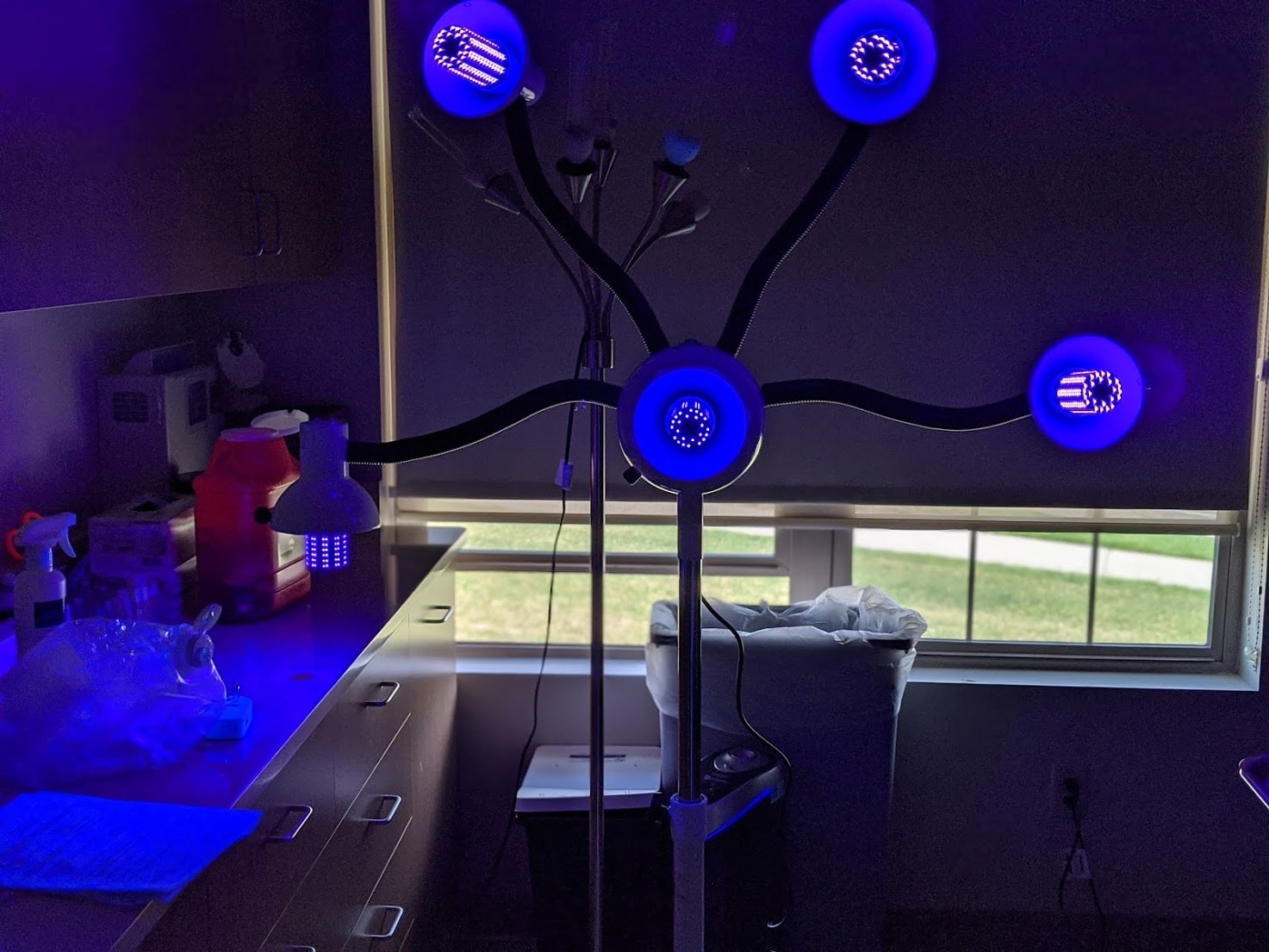
Medusa 2 is the pretty big sister. I just loved her Star Wars good looks. However, as I found out, looks aren’t everything. Overall, she just wasn’t as lethal as her little sister. Let’s dig in.
Medusa 2 is a hair processing lamp off Amazon which is made to roll around in a hair salon. It’s set up for more power, so I used five 100w LED UVC “corn cob” bulbs. What I didn’t really know was whether these LEDs would work as well as the traditional UVC quartz bulbs commonly used by hospitals.
The dosimeter card testing wasn’t possible with Medusa 2. The photochromic dye on the cards is tuned to change colors around 240 nm and whatever wavelength these powerful corn cob LED bulbs were putting off, it wasn’t close enough to 240 to turn the ink a different color. Hence, the UVC power at various surfaces couldn’t be easily measured for Medusa 2. That means that the only way I could measure if she was delivering the goods was with actual bacterial testing.
Medusa 2 did “OK to poor” with the bacterial RODAC plate tests and was smoked by her little sister. On the chair, she didn’t kill much. On the table, she did better, but not the complete kill her sister accomplished.
Disinfectant Control
I also used a medical-grade disinfectant as a control arm in this study. It did really well, also killing everything on both surfaces.
I should also note that I used a UVC wand as well, which I reported on in a prior post. I performed ten passes over the areas which is what would be practical while traveling. It didn’t do well on bacterial testing.
The Validation Summary?
I personally would stick with the tried and true UVC quartz bulbs and not mess with LED corncob bulbs. While I have seen some LEDs perform well on traditional UVC tests (that will be covered in a later blog), they clearly are all over the map on wavelength. Medusa 2 did poorly on sterilization and given the fact that I can’t easily use a standard dosimeter card to measure her output at various spots in a room, make the LED UVC bulbs a poor choice. Hence, I’ll be swapping the LEDs on Medusa 2 for the same quartz UVC bulbs that little sister uses.
Multiple Layers of Safety
At our Colorado office we have many different layers of safety. The two I highlighted above are a medical-grade disinfectant spray and UVC. We also have a HEPA filter in each room with internal UVC light capable of capturing and filtering out small water droplets that can carry the coronavirus. All of our providers use an N-99 mask or better and are tested each week for COVID-19 and temperature checked twice a day.
Hence, for me, this project has been about how to keep patients as safe as possible at another level than they can expect anywhere else. While your local Target or grocery store is doing it’s best, it can never have the same type of multilayer protection that a motivated physician’s office can provide.
Hotel UVC Hack
We have many patients that travel from great distances and many are concerned about the possibility of getting infected with the coronavirus at the hotel. Initially, I had thought that an inexpensive UVC wand would work, but my tests showed that the most common device on Amazon would never work to sterilize a hotel room because it just didn’t have enough power. Here’s that video showing the results:
However, there is a better hack. Based on my testing above, my recommendation is to buy a 25 or 36-watt UVC bulb off Amazon or elsewhere. You will also need an outlet remote like this one.
I would then use the lamps in the room as your personal medusa clones. Take the lampshade off and replace the existing bulb with the UVC bulb that you brought with you. You then plug the lamp into the outlet remote and then plug that into the wall. Place the lamp in the 3-4 common areas you want to sterilize like the bed, the bathroom, the desk, and the chair or couch. Get the bulb as close to the area you want to sterilize as possible! Leave the room for each run and then hit the remote and let the unit do its thing for 3-5 minutes per site. Do this until you’ve hit all the hot spots. The bulb produces ozone, so if your room has a window open it to vent the room and leave for 20 minutes. If your room has no window that opens, then run the air handler on high and leave for 30-60 minutes.
The upshot? I’ve always loved inventing and innovating, so this UVC challenge was incredibly fun for me. The fact that I was able to create another sterilization step for our exam and procedure rooms with parts off of Amazon that shipped in a week is really gratifying. Now all of our patients can rest assured that they are protected by multiple layers of safety!

NOTE: This blog post provides general information to help the reader better understand regenerative medicine, musculoskeletal health, and related subjects. All content provided in this blog, website, or any linked materials, including text, graphics, images, patient profiles, outcomes, and information, are not intended and should not be considered or used as a substitute for medical advice, diagnosis, or treatment. Please always consult with a professional and certified healthcare provider to discuss if a treatment is right for you.
